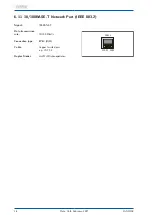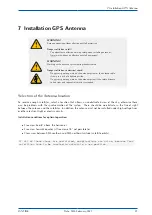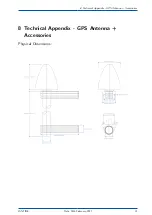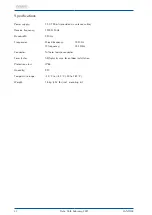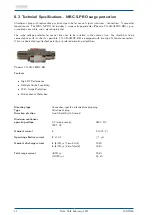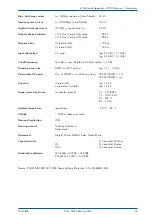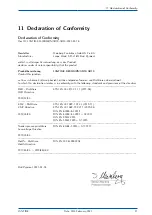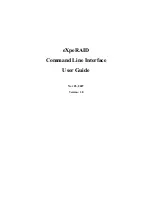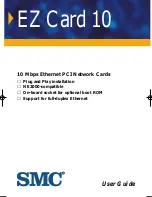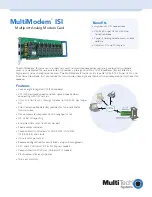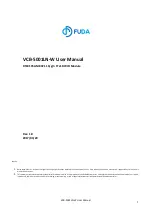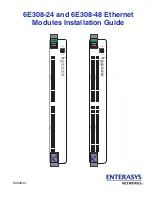
9 GPS satellite controlled clock with MRS option
9.2 GPS Functionality
A Meinberg GPS satellite controlled radio clock is used as a reference time base. The satellite receiver clock
has been designed to provide extremely precise time to its user. The clock has been developed for applications
where conventional radio controlled clocks can not meet the growing requirements in precision. High precision
available 24 hours a day around the whole world is the main feature of the new system which receives its
information from the satellites of the Global Positioning System.
The Global Positioning System (GPS) is a satellite-based radio-positioning, navigation, and time-transfer
system. It was installed by the United States Department of Defence and provides two levels of accuracy: The
Standard Positioning Service (SPS) and the Precise Positioning Service (PPS). While PPS is encrypted and
only available for authorized (military) users, SPS has been made available to the general public.
GPS is based on accurately measuring the propagation time of signals transmitted from satellites to the user’s
receiver. A nominal constellation of 21 satellites together with 3 active spares in six orbital planes 20000 km
over ground provides a minimum of four satellites to be in view 24 hours a day at every point of the globe. Four
satellites need to be received simultaneously if both receiver position (x, y, z) and receiver clock offset from
GPS system time must be computed. All the satellites are monitored by control stations which determine the
exact orbit parameters as well as the clock offset of the satellites’ on-board atomic clocks. These parameters
are uploaded to the satellites and become part of a navigation message which is retransmitted by the satellites
in order to pass that information to the user’s receiver.
The high precision orbit parameters of a satellite are called ephemeris parameters whereas a reduced pre-
cision subset of the ephemeris parameters is called a satellite’s almanac. While ephemeris parameters must
be evaluated to compute the receiver’s position and clock offset, almanac parameters are used to check which
satellites are in view from a given receiver position at a given time. Each satellite transmits its own set of
ephemeris parameters and almanac parameters of all existing satellites.
9.3 GPS Clock Features
The GPS clock module is a 100 mm x 160 mm microprocessor board, and is connected to the antenna/converter
unit by a 50 ohm coaxial cable (refer to "Mounting the Antenna"). DC power to fed to the antenna/downconverter
via the antenna cable. An optional antenna splitter is available to operate up to four receivers from a single
antenna.
The navigation message coming in from the satellites is decoded by the GPS clcok´s microprocessor in or-
der to track the GPS system time with an accuracy of better than 500 ns (or 250 nsec OCXO). Compensation of
the RF signal’s propagation delay is done by automatic determination of the receiver’s position on the globe. A
correction value computed from the satellites’ navigation messages increases the accuracy of the board’s TCXO
or OCXO to 10
-9
and automatically compensates for the oscillators aging. The last recent value is restored
from the battery buffered memory at power-up.
9.4 Time Zone and Daylight Saving
GPS system time differs from the universal time scale (UTC) by the number of leap seconds which have been
inserted into the UTC time scale since GPS was initiated in 1980. The current number of leap seconds is part of
the navigation message supplied by the satellites, so the internal real time of the GPS180 is based on UTC time
scale. Conversion to local time and annual daylight saving time can be done by the receiver’s microprocessor
if the corresponding parameters are set up by the user.
LANTIME
Date: 16th February 2021
39
Summary of Contents for LANTIME M300/MRS/AD10-AD10
Page 2: ......


